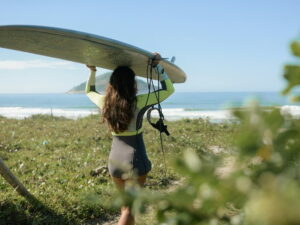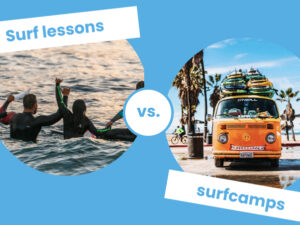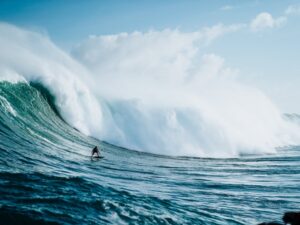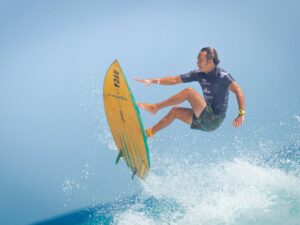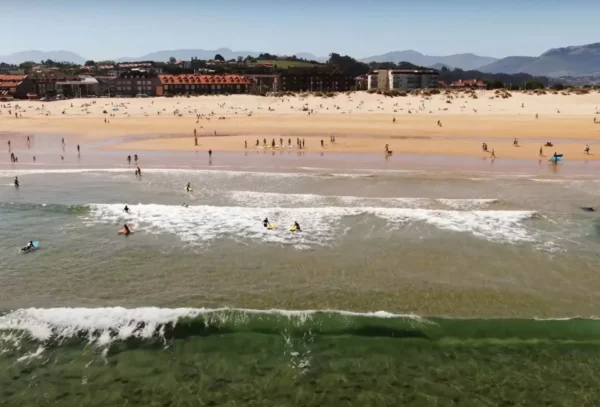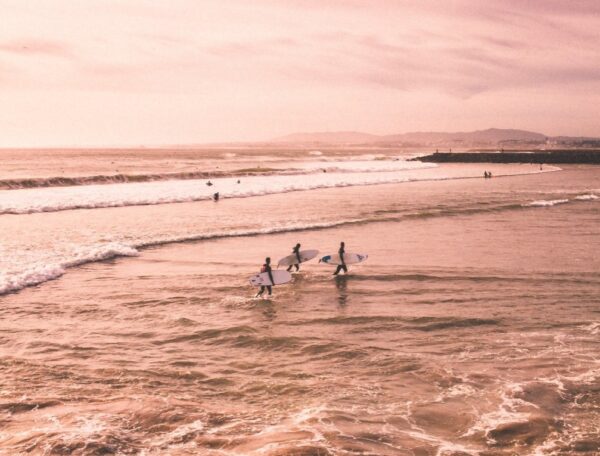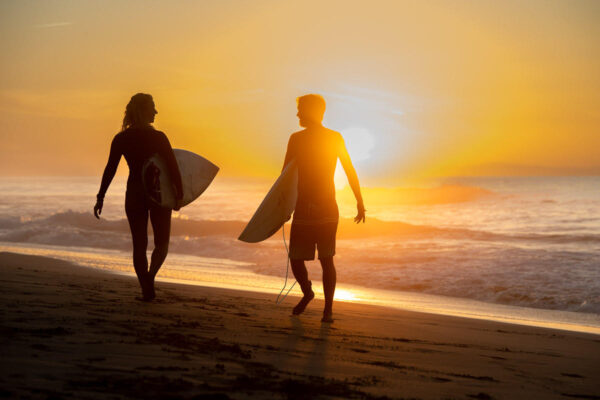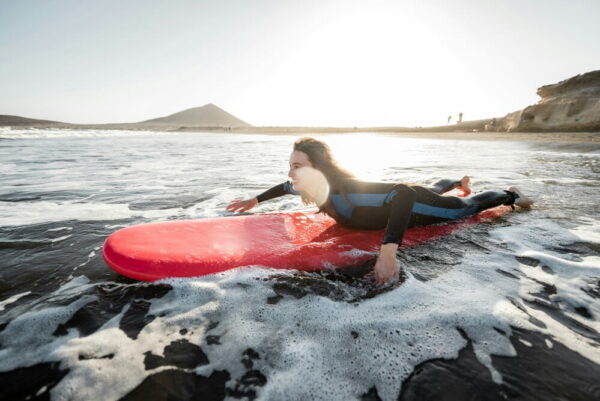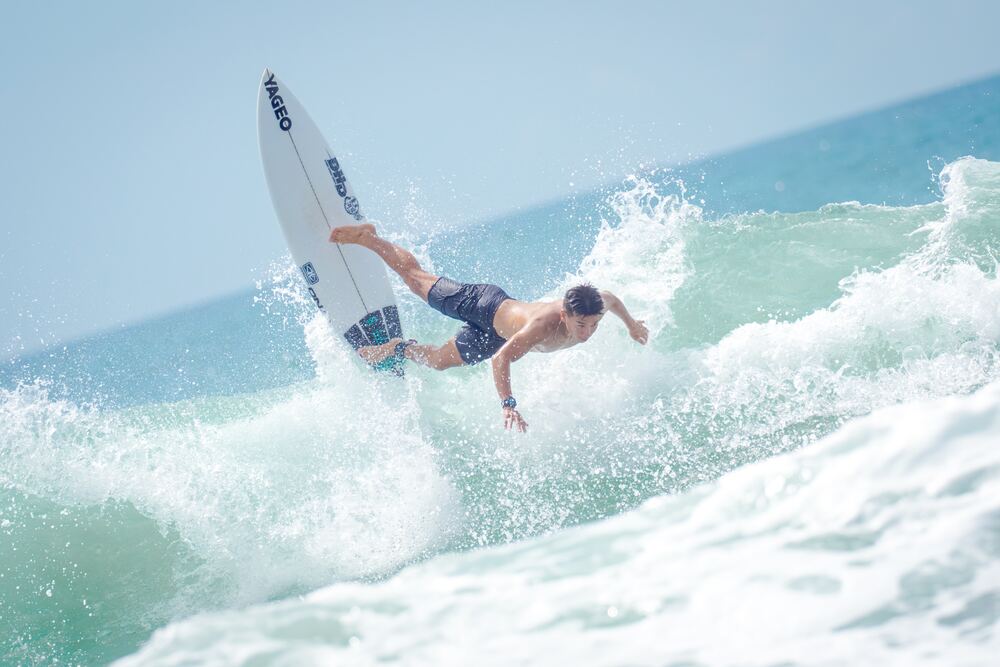
If you’re here, it’s because you’re delving into the exciting world of surfing, or you’ve been at it for a while and want to improve your technique. Don’t worry if you stumble a bit along the way. We all do it. In fact, we’re going to tell you about the most common surfing mistakes that almost all of us have encountered on one or more occasions. This way, you can avoid them and enjoy every wave to the fullest.
1. Overlooking Taking Initial Lessons
This is the major mistake. Some think they can learn to surf on their own. Créeme, no es tan sencillo como parece. Even the pros took lessons in the beginning. Not just for their own sake, but also as a matter of responsibility towards others. If you go it alone, you might hurt yourself or others.
Also keep in mind that it’s not just about you and your board. You must respect the sea, and learn about it, get to know it. Venturing into it without knowledge and without a good instructor is reckless.
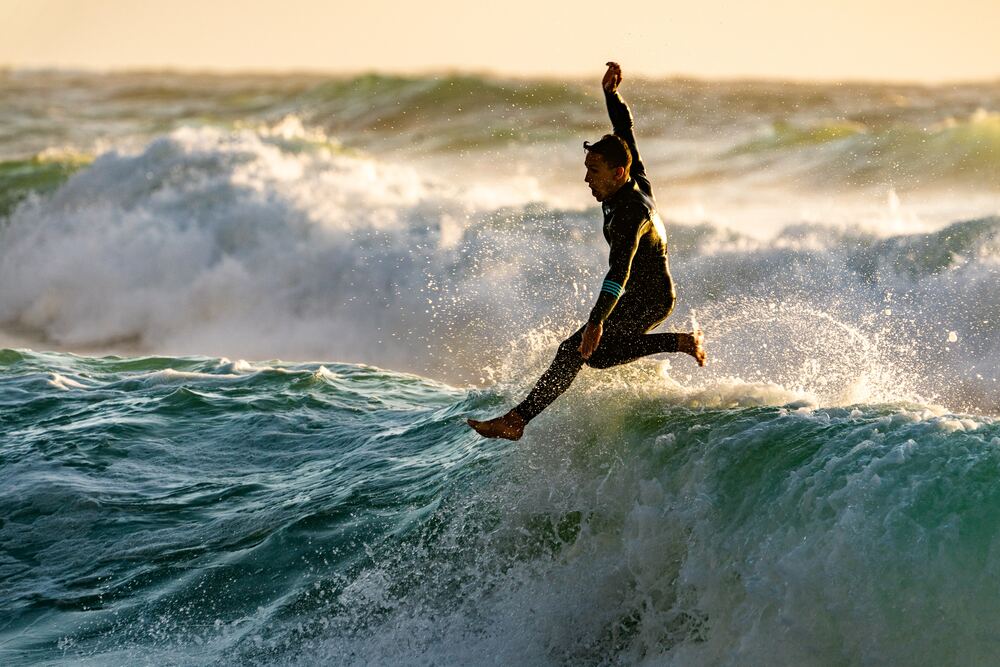
There are also people who fully trust that friend who knows a lot about the subject and is going to teach them. But when it comes down to it, not everyone has the vocation and patience of a teacher that is needed, or they don’t know as much as it seemed. So, we recommend setting aside your ego for a moment and learning from a professional from the beginning!
In surfing, it’s important to establish a strong technical foundation. Otherwise, it will limit your progress, and you may feel stuck or that you are progressing very slowly. Furthermore, it becomes more challenging to correct ingrained bad habits or technical errors. Seriously, it’s even harder than learning to surf again!
If you already know which surfing professional to take those first lessons with, go ahead! But if not, at SurfySpot, we have everything you need to find the perfect surf classes for you easily and quickly.
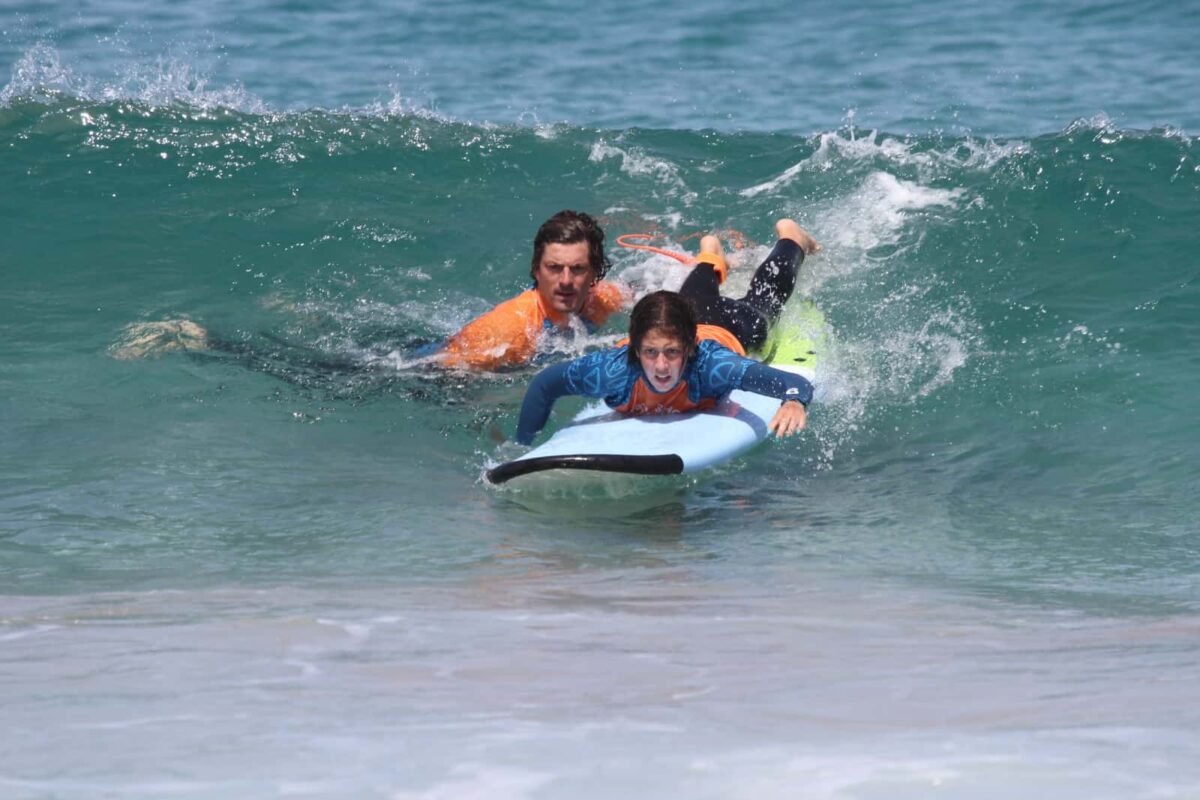
2. Using the wrong surfboard
The second most common mistake when learning to surf is important to read if you don’t have a board yet. If you already have one, it will also help you determine if you made a good choice ;). When choosing a surfboard, it’s crucial that it’s suitable for your skill level, height, weight, and the sea conditions or type of wave. Tenéis que tener en cuenta que con una tabla muy pequeña, se os hará más complicado coger las olas, poneros de pie y mantener el equilibrio.
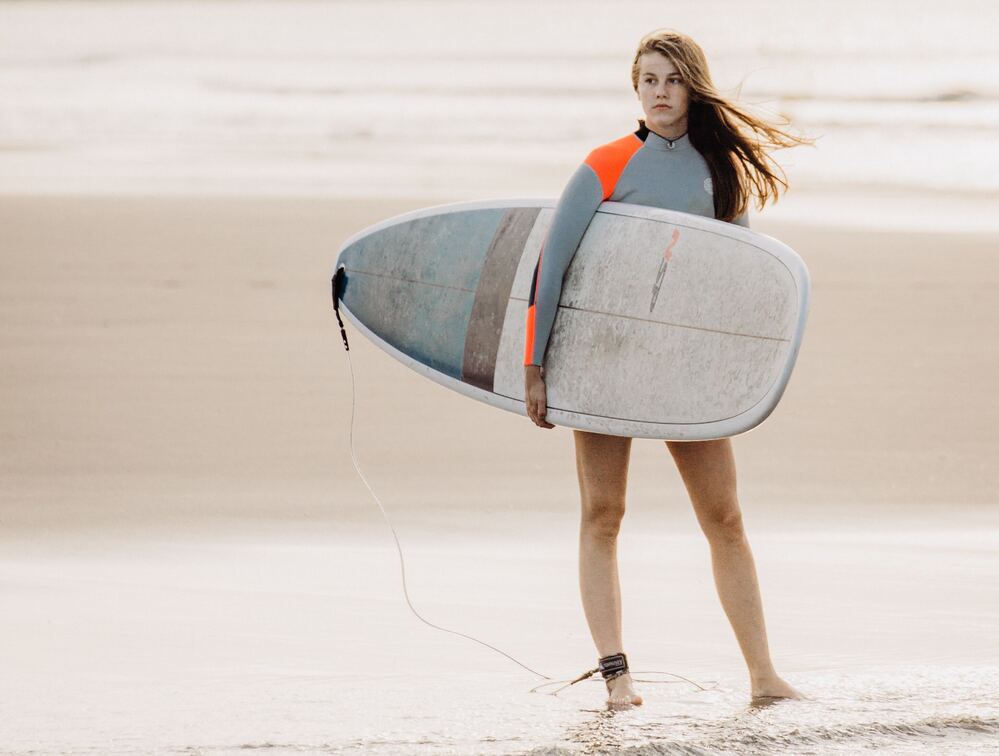
On the other hand, if the board is too large, you will lose maneuverability, and you won’t be able to do the ‘duck dive,’ which can lead to some insecurity. Diving underwater with the board when a wave is about to break provides tranquility and security because you remain in contact with and in control of the board. Don’t let it loose, with the risk of hitting someone nearby or having it drift to the shore if the leash comes off.
While ‘duck dive’ is a great technique, you won’t be able to perform it with a very buoyant board since it involves submerging it.
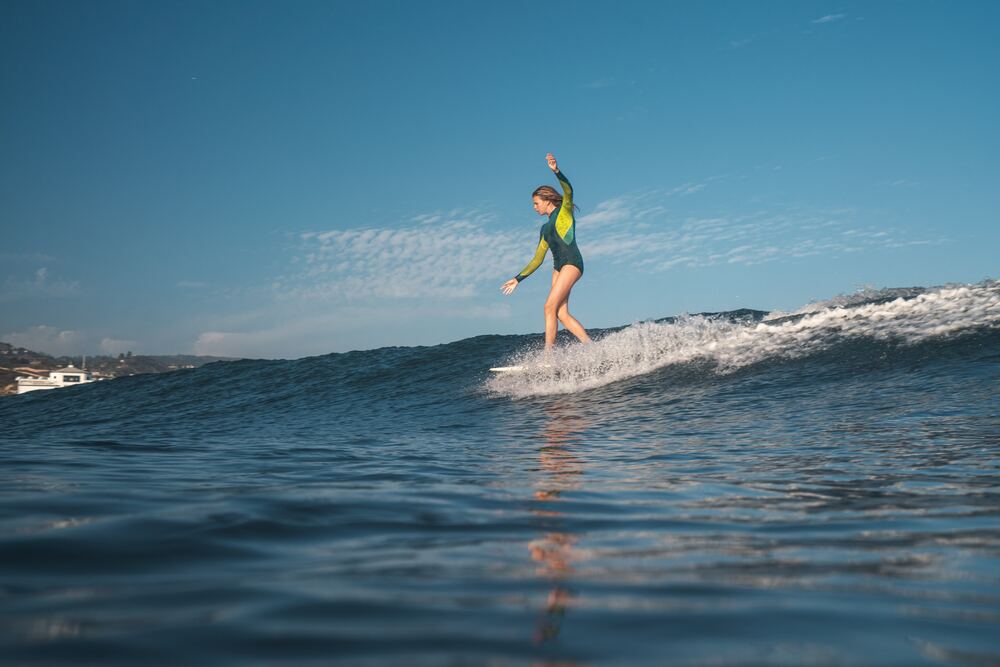
Our recommendation is that the ideal surfboard for a beginner is not one-size-fits-all, but it depends on each individual case. However, if we have to give an opinion, most beginners should choose between a board they can surf on or one they can ‘duck dive,’ but not both at the same time. That’s why, in general, we recommend beginners to opt for the board they can surf on.
“We’ve seen many people buy small boards to ‘duck dive,’ which they achieve but at the cost of not catching waves… What do you prefer?”
3. Looking down instead of ahead.
Watch out there! Many beginners concentrate so much on their board that they forget to look ahead. This throws off your balance and makes you lose control.
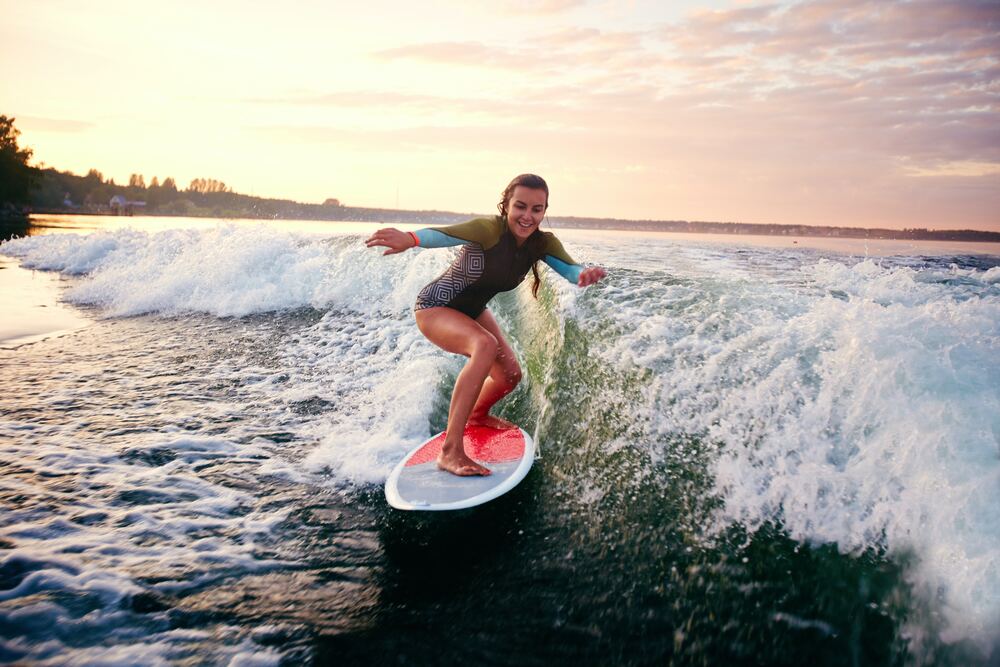
It is basic and essential to look forward or at the face of the wave. Always keep your eyes on the target! Keep your gaze forward, and you’ll see how everything flows better. The reasons why looking forward, that is, where we are going, has such a significant impact on our surfing are simple and several:
- We see our surroundings, avoid running into anyone,
- We know which part of the wave we are in
- We can anticipate what is coming ahead
- When getting to our feet, we make room for the front foot
4. Not practicing getting to your feet on land or paddling enough
Another common mistake when learning to surf is because it is often recommended to work on paddling as the key to surfing that you must master. We, at SurfySpot, believe that paddling is important, but if you’re just starting out, we recommend that you practice getting to your feet on land even more.
Paddling.
Paddling is important and should not be underestimated. Practice your paddling skills to build strength and endurance, so you can spend more hours surfing later on. However, if you are not in good shape and spend a lot of time paddling, you can end up injuring your shoulders. Therefore, if you’re a beginner and not in great shape, be cautious about paddling excessively for extended periods.
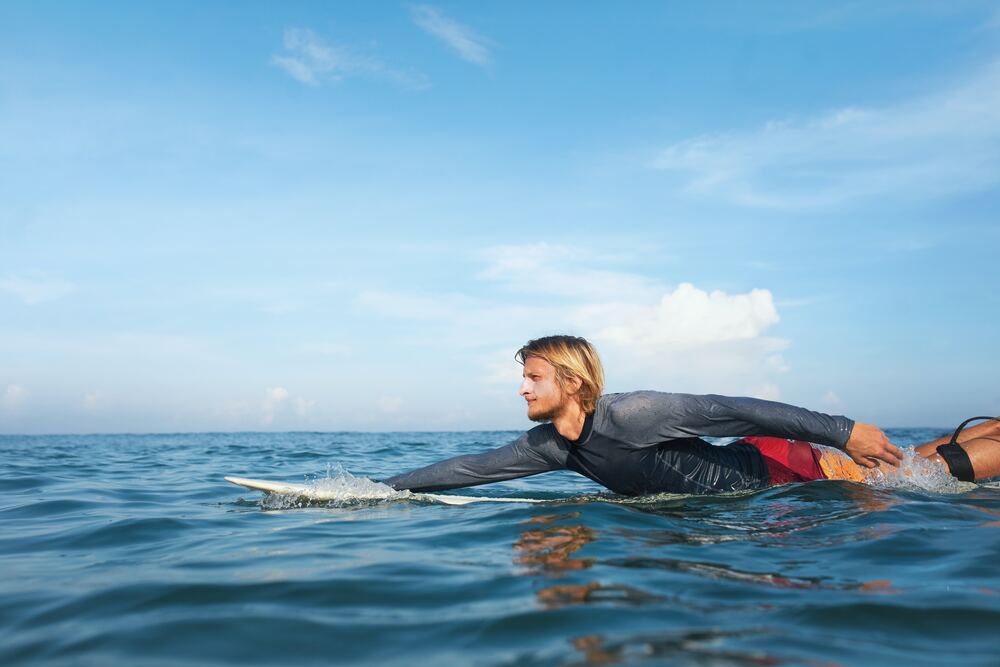
The take off
The take off, on the other hand, is a technical movement that we must execute at the right moment and moderately quickly. If it takes us forever, we’ll miss the wave. And what is the right moment? Well, it’s that second between when the wave carries us and the next one when we have already fully descended. If you get to your feet too late and ride the wave lying down, you’ll notice that when you try to stand up, you lose speed, the board sinks, and then the wave catches you from behind, sending you straight into the water!
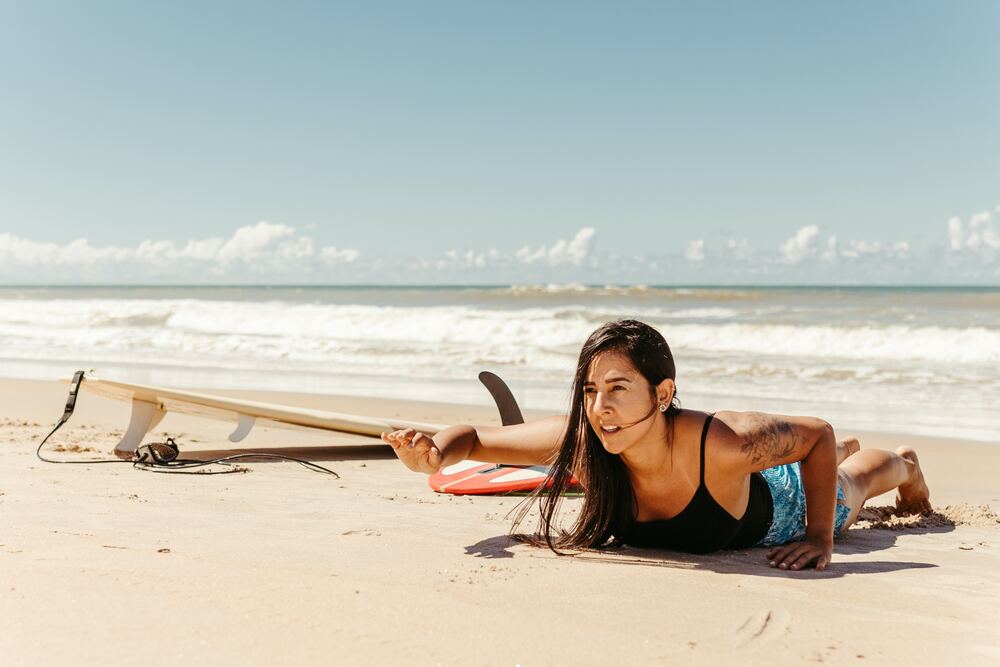
What should you practice more in the beginning? Paddling versus taking off
The crux of the matter is getting to your feet at the top of the wave and riding it down while standing. Since this moment happens very quickly, there isn’t much time to think. That’s why it’s crucial to internalize the technique of getting to your feet. Practice it a lot on land. This way, when the time comes to do it in the water, your brain will step aside, and you won’t have to think, just repeat the gesture that is already deeply ingrained. It will become almost automatic. You’ll be ready to conquer the waves! Well, at least you’ll have a crucial part mastered 😉
5. Not observing the wave pattern
Each wave has its own rhythm and pattern. Some beginners dive in without observing the behavior of the sea. Mistake! Take a moment to understand how waves form and when the ideal time is to catch one.

6. Not finding the right balance.
Balance is the key to surfing. At the beginning, it can be challenging to stay standing on the board. Remember to evenly distribute your weight and avoid leaning too far forward or backward.
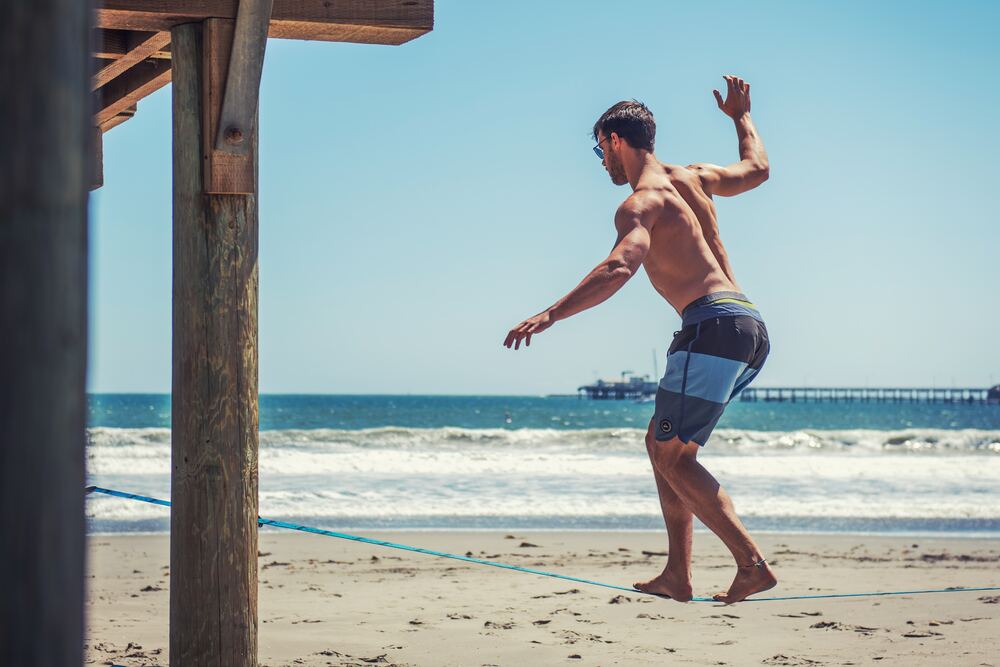
7. Not being patient
Learning to surf takes time. Don’t get frustrated if you don’t master it right away. Patience is your best friend in this process. Every fall is a lesson, so keep going!
How to avoid these mistakes and surf successfully and have fun
We are clear about this: the best way to avoid making any of the most common mistakes when learning to surf is by taking surf lessons with a professional instructor. “You can find your ideal surf class or surf camp at SurfySpot.” With the guidance of a professional, you’ll learn to avoid these pitfalls and turn the experience into something fun rather than frustrating. Moreover, how about taking the classes or camp with friends or as a couple? No one said you have to do it alone! And certainly not by suffering or wearing yourself out learning things on your own, the hardest way.
So, you know it now, with a little practice and the right guidance, you’ll soon be riding the waves like a true pro. Enjoy surfing! 🌊🤙


